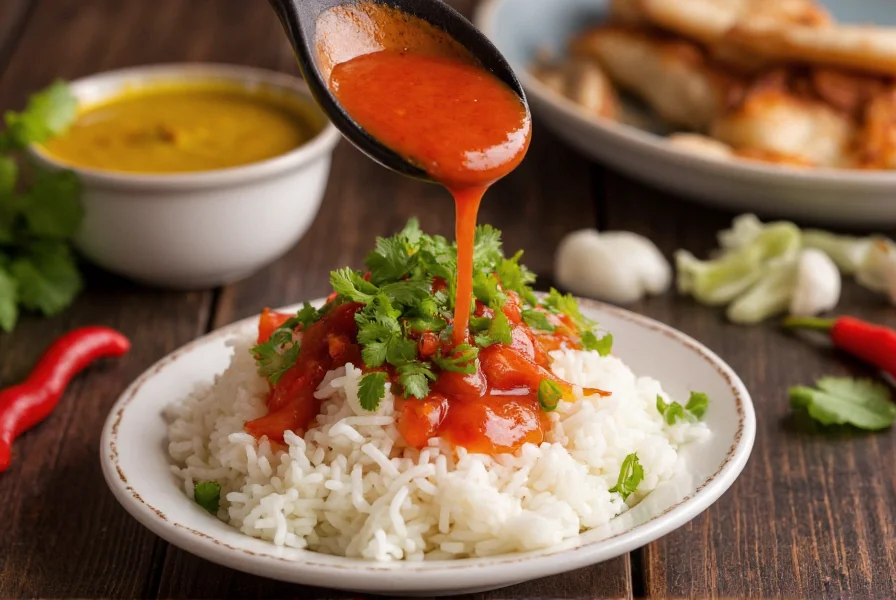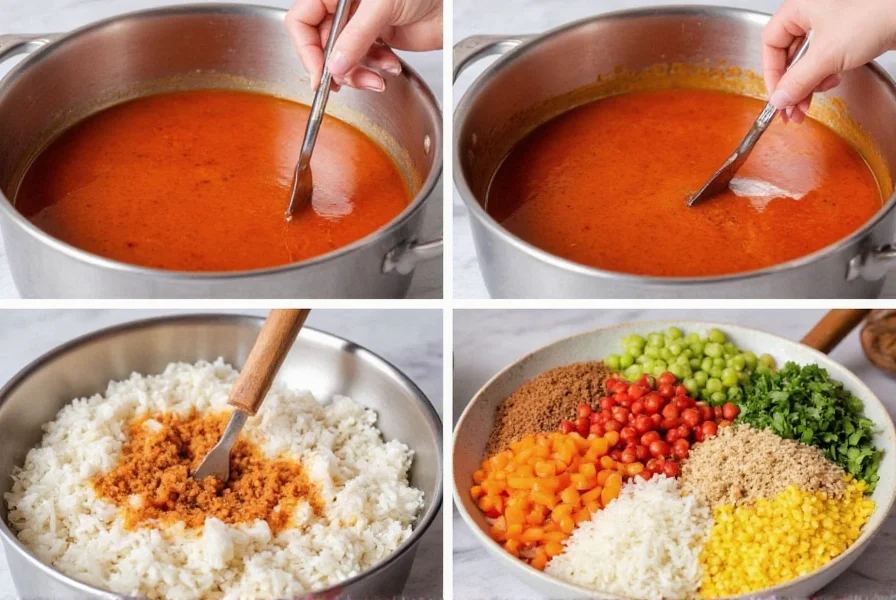Chili over rice represents one of the most accessible comfort foods across Southeast Asia and beyond. This humble dish transforms basic pantry staples into a satisfying meal through the magic of properly balanced chili sauce. While seemingly simple, mastering authentic chili over rice requires understanding its cultural roots and the delicate interplay of flavors that define exceptional versions of this street food favorite.
The Cultural Journey of Chili Over Rice
Though commonly associated with Chinese cuisine as lu rou fan (though that's technically a different dish), chili over rice as we know it today evolved through culinary exchanges across Asia. Malaysian and Singaporean versions often feature a sweeter profile with shrimp paste, while Thai iterations incorporate fresh bird's eye chilies and fish sauce. The dish gained global popularity through food stalls and hawker centers, where vendors perfected their signature chili sauces through generations of refinement.

Essential Components of Perfect Chili Over Rice
Creating exceptional chili over rice requires attention to three critical elements:
| Component | Key Characteristics | Common Mistakes |
|---|---|---|
| Rice Foundation | Properly cooked jasmine or medium-grain rice with ideal texture | Using overcooked or undercooked rice; wrong rice variety |
| Chili Sauce | Balance of heat, umami, and subtle sweetness; proper consistency | Overpowering heat; watery or too thick sauce |
| Garnishes | Fresh elements that cut through richness (cucumber, cilantro) | Omitting fresh components; using stale garnishes |
Authentic Homemade Chili Over Rice Recipe
Creating restaurant-quality chili over rice at home requires just seven basic ingredients and 15 minutes. This easy homemade chili over rice recipe delivers authentic flavor without specialty ingredients:
Ingredients for Two Servings
- 2 cups cooked jasmine rice (freshly prepared)
- 3 tablespoons vegetable oil
- 4 cloves garlic, minced
- 2-3 fresh red chilies, finely chopped (adjust to heat preference)
- 1 tablespoon fermented black beans, rinsed
- 2 tablespoons light soy sauce
- 1 teaspoon sugar
- 4 ounces ground pork or tofu (optional)
- 1/4 cup water or broth
- Thinly sliced cucumber and cilantro for garnish
Step-by-Step Preparation
- Cook rice according to package instructions, ensuring proper texture
- Heat oil in wok or skillet over medium-high heat
- Add garlic and chilies, stir-fry for 30 seconds until fragrant but not burnt
- Add black beans and optional protein, cook until browned
- Stir in soy sauce, sugar, and water/broth
- Simmer for 3-4 minutes until sauce thickens slightly
- Pour hot chili sauce generously over freshly cooked rice
- Garnish with cucumber slices and fresh cilantro

Regional Variations Worth Trying
Exploring different chili over rice variations reveals the dish's remarkable adaptability across cultures:
- Malaysian Style: Incorporates shrimp paste (belacan) and palm sugar for complex umami-sweet profile
- Thai Basil Chili: Features holy basil, fish sauce, and bird's eye chilies for intense heat
- Sichuan Version: Uses doubanjiang (fermented chili bean paste) and Sichuan peppercorns
- Vegan Adaptation: Substitutes mushroom broth and extra tofu for depth without animal products
Pro Tips for Perfect Chili Over Rice Every Time
Mastering this quick chili over rice meal requires attention to detail:
- Rice temperature matters: Serve chili sauce over hot rice to prevent sogginess while allowing flavors to meld
- Chili preparation: Remove seeds for milder heat; keep them for authentic spiciness
- Sauce consistency: Aim for coating consistency—not too watery, not too thick
- Layering flavors: Build complexity by adding aromatics before chilies
- Fresh garnishes: Never skip the cooling elements that balance the heat
Common Mistakes to Avoid
Even experienced cooks make these errors with traditional chili over rice:
- Burning garlic during initial cooking, creating bitter notes
- Using pre-made chili sauces that lack depth of homemade versions
- Serving over cold or day-old rice that hasn't been properly reheated
- Overcomplicating the recipe with too many ingredients
- Ignoring the importance of texture contrast between sauce and rice
Why This Simple Dish Endures
Chili over rice exemplifies culinary efficiency—transforming minimal ingredients into maximum flavor. Its enduring popularity stems from perfect balance: the comforting neutrality of rice against vibrant, spicy sauce creates a harmonious eating experience. Unlike more complex dishes, authentic chili over rice showcases how restraint often produces superior results. When searching for best chili sauce for rice, remember that simplicity with quality ingredients beats complicated recipes every time.
Frequently Asked Questions
What's the difference between chili oil and chili sauce for rice?
Chili oil primarily provides heat and aroma without substantial body, while chili sauce for rice contains solid ingredients like garlic, chilies, and proteins that create a complete topping. Authentic chili sauce has texture and substance, whereas chili oil serves as a condiment to enhance existing dishes.
Can I make chili over rice vegetarian without losing flavor?
Absolutely. Substitute mushroom broth for meat-based liquids, use extra-firm tofu instead of ground meat, and incorporate fermented black beans for umami depth. Many authentic Southeast Asian versions are naturally vegetarian, relying on the complex flavors of properly prepared chilies and aromatics rather than meat.
How do I store leftover chili sauce properly?
Store in an airtight container in the refrigerator for up to 5 days. The flavors often improve after 24 hours as ingredients meld. For longer storage, freeze in ice cube trays then transfer to freezer bags for up to 3 months. Always reheat thoroughly before serving over freshly cooked rice.
What rice variety works best for chili over rice?
Jasmine rice provides the ideal balance of fragrance and texture, but medium-grain rice works well too. Avoid long-grain varieties like basmati which remain too separate. The rice should have slight stickiness to hold the chili sauce while maintaining distinct grains. Always use freshly cooked rice rather than leftovers for optimal texture.
How can I adjust the heat level to suit different preferences?
Control heat by adjusting both chili quantity and preparation. Remove seeds and membranes for milder heat, keep them for maximum spice. You can also balance heat with sugar or a splash of rice vinegar. For family meals, prepare the base sauce mild then offer additional chili oil on the side for those who want more heat.











 浙公网安备
33010002000092号
浙公网安备
33010002000092号 浙B2-20120091-4
浙B2-20120091-4